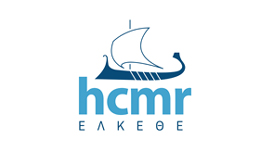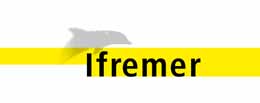MARIS
Type of resources
Available actions
Topics
INSPIRE themes
Keywords
Contact for the resource
Provided by
Years
Formats
Representation types
status
Service types
Scale
Resolution
-

POSEIDON is an operational marine monitoring, forecasting and information system for the Greek Seas. The observing component is a distributed infrastructure made by three coastal buoys (Saronikos buoy-SB, Heraklion Coastal Buoy-HCB and Athos buoy-AB) and one FerryBox (PFB). A calibration laboratory (see Chapter 2) is supporting the observing activities. The Athos buoy is equipped with meteo sensors and T, C/S, DO, fluorescence and turbidity sensors up to 100m in depth, is located in the coastal area in the Northern Aegean, representative of mesotrophic to oligotrophic conditions affected by circulation. Although coastal the depth of the water column allows deeper observations.
-

POSEIDON is an operational marine monitoring, forecasting and information system for the Greek Seas. The observing component is a distributed infrastructure made by three coastal buoys (Saronikos buoy-SB, Heraklion Coastal Buoy-HCB and Athos buoy-AB) and one FerryBox (PFB). A calibration laboratory (see Chapter 2) is supporting the observing activities. The Heraklion Coastal Buoy will be deployed towards the beginning of 2016 between Dia Island and Heraklion city, equipped with meteo, T, C/S, wave sensors and current meter. Furthermore DO, fluorescence and turbidity sensors at various depths in the euphotic zone will be added in the near future. The location is of particular interest as the coastal expression of the very oligotrophic Cretan Sea ecosystem, modulated by the moderate to small riverine inputs and the rural activities in the Northern Crete.
-

Data access will be provided in near real time and in delayed mode. Parameters include salinity, temperature, chlorophyll fluorescence, turbidity, oxygen, pH, pCO2, wave height and direction, current speed and direction and also in air data on temperature, irradiation and air pressure. Also data from laboratory analyses of water samples are included, e.g. chlorophyll, salinity, CDOM, coloured dissolved organic matter, phytoplankton abundance and biodiversity. Data is distributed through the Baltic Operational Oceanographic System, BOOS and through the Swedish Oceanographic Data Centre at SMHI. Data is accessible through download and through web services. Data and metadata is delivered through SMHI systems for distributing oceanographic data, e.g. http://sharkdata.smhi.se according to EU standards and procedures.
-
WMS/WFS services for marine chemical datasets used in EMODNet Chemistry and provided by SeaDataNet. The data distribution is managed by the Common Data Index (CDI) Data Discovery and Access service
-
WMS for EMODNet HRSM CDI services by SeaDataNet
-
WMS/WFS services for marine chemical datasets used in EMODNet Chemistry and provided by SeaDataNet. The data distribution is managed by the Common Data Index (CDI) Data Discovery and Access service. The service offers layers based on the chemical observations in CDI as grouped per vocabulary P36.
-
WMS/WFS services for marine chemical datasets used in EMODNet Chemistry and provided by SeaDataNet. The data distribution is managed by the Common Data Index (CDI) Data Discovery and Access service. The service offers layers based on the chemical observations in CDI as grouped per vocabulary P36.
-

HF Radar System
-

COSYNA provides near real-time data from integrated observations and model results. The observations comprise a variety of in situ techniques (e.g. FerryBox, Gliders, Cabled Underwater Observatories) as well as remote sensing from shore by radar and from space by satellite. Key physical, sedimentary, geochemical and biological parameters are observed at high temporal resolution in the water column and the upper and lower boundary layers. COSYNA’s modelling part consists of nested models with different grid sizes for hydrography (salinity, waves, currents), for suspended matter and for biogeochemical and ecosystem processes. Sophisticated data assimilation procedures, i.e. continuous corrections of the models by observations, improve the reliability of now-casts and short-term forecasts. All data and plots are generally available for download through the data portal (http://codm.hzg.de/codm/). FerryBox data can be directly accessed via the data portal ferrydata.hzg.de where different vizualizaton tools are available (e.g. single transect, pool data along a certain transect for a longer time period or time-series at certain locations). Furthermore, all datasets can be exported in ASCII (tab separated tables) or NetCDF format and downloaded. COSYNA’s motivation is bridging the gap between operational oceanography and the various users of forecasts of the marine state. For further outreach to stakeholders and the wider community an app has been developed for the most common platforms.
-

MOLIT is designed for in situ monitoring in large rivers, estuaries and coastal areas. It is used for since many years in the Loire estuary where a two level sampling, surface and 10 m depth, is performed with multiparameter measurements (T, DO, salinity, turbidity, fluorescence). Nevertheless, if needed, the MOLIT hydraulic system can perform sampling at 4 different levels. The whole hydraulic sampling system is protected from bio-fouling by an efficient seawater electrolysis scheme; this bio-fouling protection can be used to protect the tested instruments. The data are available by a wireless communication system or can be stored on board.
 Metadata catalogue
Metadata catalogue